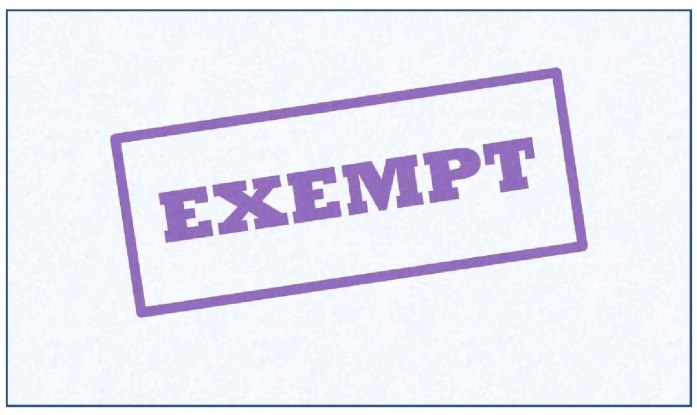This is an Eval Central archive copy, find the original at rka-learnwithus.com.
In this IRB 101 series, I have provided general context for IRBs, including what IRBs are and why they exist and potential risks to research participants to illustrate IRBs’ purpose. This post will help you determine—if indeed you are conducting human subjects research—whether it is exempt from IRB review.

What are exemptions?
The Office of Human Research Protections (OHRP) within the Department of Health and Human Services (HHS) provides federal regulations for human subjects research. One part of the regulation known as Subpart A, or the Common Rule, identifies exemption categories for human subjects research. OHRP updated the Common Rule in 2018. OHRP now identifies eight categories of human subjects research that are considered exempt from the Department of Health and Human Services’ regulatory requirements. All eight categories are found here, described technically.
Exemptions applicable to visitor studies research and evaluation
Interpreting the technical language of the eight exemption categories can prove confusing. Here, I describe (in as plain language as possible) the four exemptions categories that are likely to apply to visitor studies research and evaluation in museums. Keep in mind that all exemption categories describe research practices that pose no more than minimal risk to research participants. The exemption categories aim to identify what about the research process makes it pose no more than minimal risk to research participants.
Exemption Category 2
Are you collecting surveys, interviews, or observations of public behavior?
If yes, your study may be exempt under Exemption Category 2. The study is exempt if the identity of the human subjects participating (the people you are collecting data from) cannot be readily ascertained (e.g., anonymous data, or data delinked from identifiers like names or email addresses, and kept confidential); OR if the identity of human subjects is disclosed, the disclosure does not have detrimental consequences or potential risks.
Examples of exempt research in this category:
- An anonymous survey of a random sample of adult visitors
- Interviews with teachers about their program experience
- Unobtrusive observations of families at the museum
For research with children, observations of public behaviors can be exempt under this category (i.e., observations of families at the museum). However, surveys or interviews with children are not exempt under this category because any interactions with children are subject to greater oversight.
Exemption Category 3
Are you collecting study information involving a benign behavioral intervention (e.g., changing noise in exhibitions) OR using audiovisual recording?
If yes, the study may be exempt under Exemption Category 3 if the human subject consents. Plus, as in Exemption Category 2, the study is exempt if you can’t easily identify participants OR disclosure of participants’ identity does not have detrimental consequences or potential risks.
Examples of exempt research in this category:
- An experimental study where adult visitors consent to experience an interactive with ambient noise and without noise (e.g., benign interview)
- Audio-recorded interviews with teachers about their program experience (with their consent)
- Adult visitors video recording their visit to an exhibition after consenting to participate in the study.
No research with children is exempt under this category.
Exemption Category 4
Are you analyzing old data sets that other researchers collected?
If yes, the study may be exempt under Exemption Category 4. Private information that is publicly available, or that was recorded in a way that the subjects can no longer be identified, is considered “secondary use.” Research with secondary use data is usually exempt from IRB review.
Examples of exempt research in this category:
- Analyzing publicly available open access data
- Conducting analysis on data previously collected by another researcher (who had IRB permission); you are provided data delinked from identifiers
Exemptions NOT applicable to visitor studies research and evaluation
Exemption Category 1
It may be tempting to say visitor studies research is exempt under Exemption Category 1. This category describes research in commonly accepted educational settings, involving normal educational practices. While museums might consider themselves to be educational settings, research within museum settings are not exempt under this category because they are not considered “commonly accepted educational settings.”
Still feeling lost?
Do you still feel confused as to whether you need IRB review or not? In my next post, I will share a decision tree that distills this information even further.
The post IRB 101: What types of human subjects research are exempt from IRB? appeared first on RK&A.